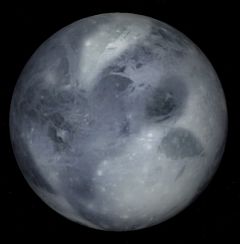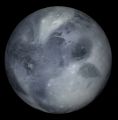Difference between revisions of "Himalia"
Jump to navigation
Jump to search
(Arvil moved page User:Arvil/Sandbox02 to Thebe: Move to article page.) Tag: New redirect |
(HImalia.) Tag: Removed redirect |
||
| Line 1: | Line 1: | ||
| − | + | {{Nsat-Stub}} | |
| + | |||
| + | {| cellpadding="2" cellspacing="0" style="margin:25px 0 0 10px; border:3px solid lightsteelblue;width:250px; font-size:90%; font-family:'Arial','Helvetica'; float: right; clear: right;"Template in Orbiter" | ||
| + | !bgcolor="lightsteelblue" colspan="2" align="center" |Himalia | ||
| + | |- | ||
| + | |colspan="2" align="center"|[[Image:Himalia-jupiteriiizip.jpg|240px]] | ||
| + | |- | ||
| + | |colspan="2" align="center"|'''Himalia from jupiter_iii.zip in Orbiter 2002''' | ||
| + | |- | ||
| + | !bgcolor="lightsteelblue" colspan="2"|Designation | ||
| + | |- | ||
| + | |Name||align="right"|Himalia | ||
| + | |- | ||
| + | |width="30%"|Reference body||align="right" width="30%"|[[Jupiter]] | ||
| + | |- | ||
| + | !bgcolor="lightsteelblue" colspan="2"|Planetary mean orbits | ||
| + | |- | ||
| + | |width="30%"|Epoch||align="right" width="50%"|1976.606435 | ||
| + | |- | ||
| + | |width="30%"|Semimajor axis (a)||align="right" width="50%"|11461000000 m | ||
| + | |- | ||
| + | |width="30%"|Eccentricity (e)||align="right" width="30%"|0.1623 | ||
| + | |- | ||
| + | |width="30%"|Inclination (i)||align="right" width="30%"|27.496° <br> (0.47989573 radian) | ||
| + | |- | ||
| + | |width="30%"|Longitude of the ascending node (LAN, ☊)||align="right" width="30%"|57.24501545° <br> (0.999114 radian) | ||
| + | |- | ||
| + | |width="30%"|Longitude of periapsis (ϖ)||align="right" width="30%"|264.6950422° <br> (4.6198 radian) | ||
| + | |- | ||
| + | |width="30%"|Mean longitude (L)||align="right" width="30%"|198.3522591° <br> (3.4619 radian) | ||
| + | |- | ||
| + | !bgcolor="lightsteelblue" colspan="2"|Selected physical parameters | ||
| + | |- | ||
| + | |width="30%"|Mean radius||align="right" width="30%"|12500 m | ||
| + | |- | ||
| + | |width="30%"|Mass||align="right" width="30%"|1.91×10<sup>16</sup> kg | ||
| + | |- | ||
| + | !bgcolor="lightsteelblue" colspan="2"|Rotation elements | ||
| + | |- | ||
| + | |width="30%"|SidRotPeriod||align="right" width="30%"|21648384 seconds (250.56 days) | ||
| + | |- | ||
| + | |width="30%"|SidRotOffset||align="right" width="30%"|0.007 | ||
| + | |- | ||
| + | |width="30%"|Obliqutiy||align="right" width="30%"|0 | ||
| + | |- | ||
| + | |width="30%"|LAN||align="right" width="30%"|0 | ||
| + | |- | ||
| + | |width="30%"|Note||align="right" width="30%"|*Elements given are from Himalia.cfg (jupiter_ii.zip) | ||
| + | |} | ||
| + | '''Himalia (Jupiter VI)''' is the is the largest irregular [[Natural satellites|stellite]] and the sixth largest satellite of [[Jupiter]]. It was discovered by [[w:Charles Dillon Perrine|Charles Dillon Perrine]] at the [[w:Lick Observatory|Lick Observatory]] on 3 December 1904. Himalia was named after a nymph in Greek mythology who bore three sons by [[w:Zeus|Zeus]]. | ||
| + | |||
| + | == Himalia in Orbiter == | ||
| + | Himalia was introduced to Orbiter with the release of ''jupiter-iii.zip'' in October 2002. | ||
| + | {|class="wikitable sortable” style="text-align: center" | ||
| + | |colspan="8"|<center>'''Orbiter versions and add-ons which include Himalia'''</center> | ||
| + | |- | ||
| + | !Add-on!!Source!!Version!!Author!!Type!!Release Date!!Compatibility!!Wiki article | ||
| + | |- | ||
| + | |[https://library.avsim.net/esearch.php?DLID=&Name=&FileName=jupiter_iii.zip&Author=&CatID=root Jupiter III]||AVSIM||||Rolf Keibel||Scenery||28 October 2002|||| | ||
| + | |} | ||
| + | |||
| + | == See also == | ||
| + | [[w:Himalia (moon)|Himalia]] at [[w:Wikipedia|Wikipedia]] | ||
| + | |||
| + | == Gallery == | ||
| + | <gallery> | ||
| + | Himalia-jupiteriiizip.jpg|<center>Himalia from ''jupiter_iii.zip'' in Orbiter 2002</center> | ||
| + | Himalia - New Horizons.png|<center>Himalia showing changes in phase as seen by the [[w:New Horizons|New Horizons]] spacecraft on 6 March 2007 during the slingshot flyby past [[Jupiter]].</center> | ||
| + | Animation of Himalia orbit around Jupiter.gif|<center>Animation of Himalia's orbit over time due to perturbations,<br>from Wikimedia Commons</center> | ||
| + | </gallery> | ||
| + | |||
| + | {{JupiterSat}} | ||
| + | {{SolarSystem}} | ||
Revision as of 02:39, 8 August 2024
 | This natural satellite related article is a stub. You can help Orbiterwiki by expanding it.
Himalia (Jupiter VI) is the is the largest irregular stellite and the sixth largest satellite of Jupiter. It was discovered by Charles Dillon Perrine at the Lick Observatory on 3 December 1904. Himalia was named after a nymph in Greek mythology who bore three sons by Zeus. Himalia in OrbiterHimalia was introduced to Orbiter with the release of jupiter-iii.zip in October 2002.
See alsoGallery
| ||||||||||||||||||||||||||||||||||||||||||||||||||||||||||||||||||||||||||||||||



